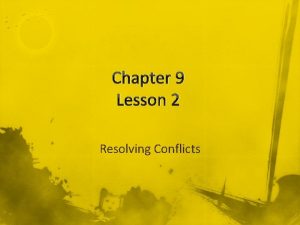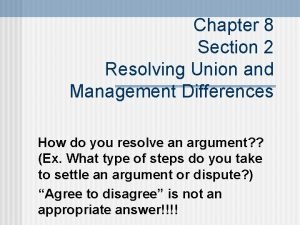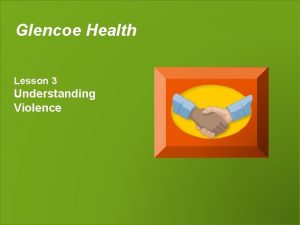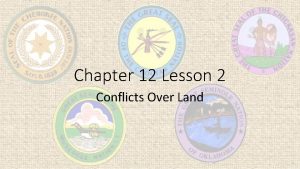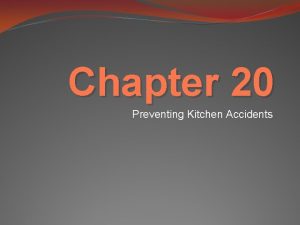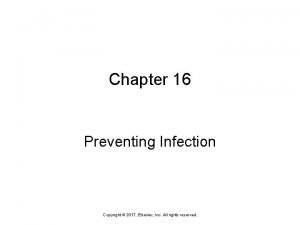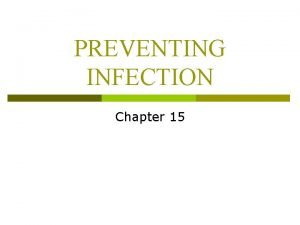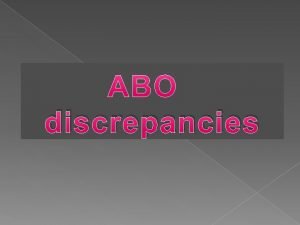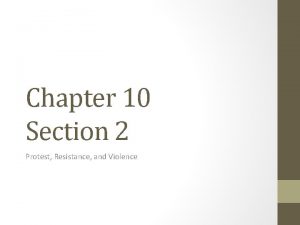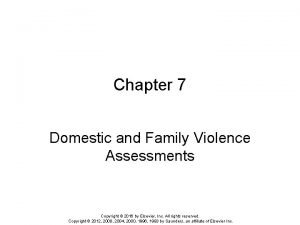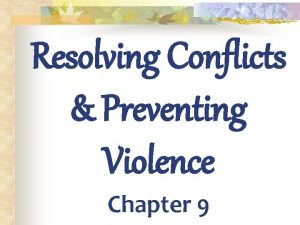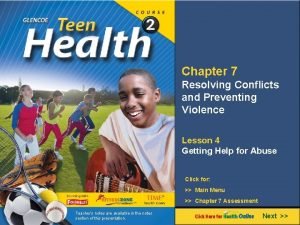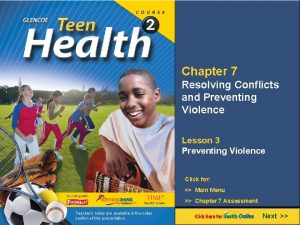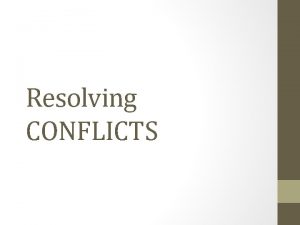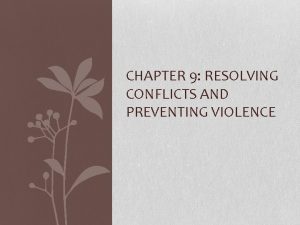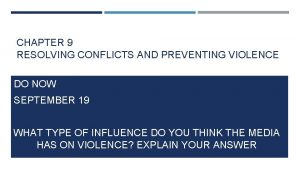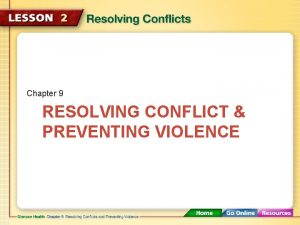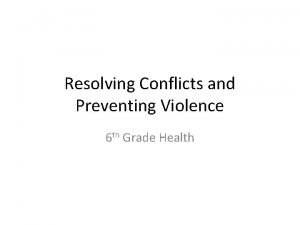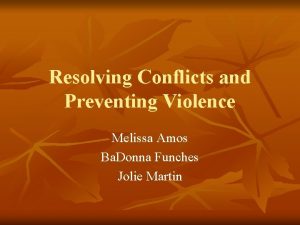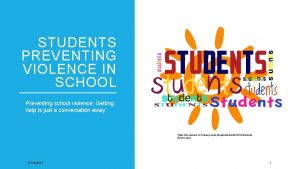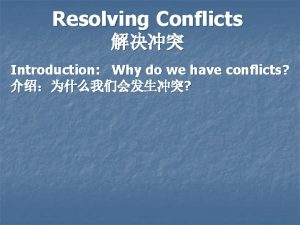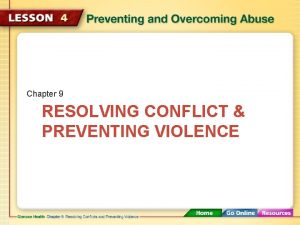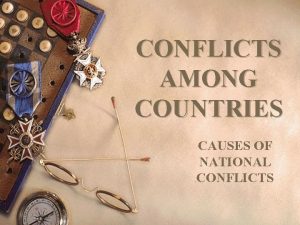Chapter 7 Resolving Conflicts and Preventing Violence Lesson


















- Slides: 18

Chapter 7 Resolving Conflicts and Preventing Violence Lesson 1 Understanding Conflict Click for: >> Main Menu >> Chapter 7 Assessment Teacher’s notes are available in the notes section of this presentation. Next >>

§ conflict A disagreement between people with opposing viewpoints, interests, or needs § prejudice A negative and unjustly formed opinion

In this lesson, you will be able to § explain the nature of conflicts. § identify common causes of conflict. § recognize the signs of conflict. § describe types of conflicts at home and school. § discuss when to avoid conflict.

Organizing Information As you read this lesson, create and outline that shows the ways that disagreements can lead to conflict.

The Nature of Conflict If conflict is handled peacefully, it can raise issues that need to be worked out and result in stronger relationships. conflict A disagreement between people with opposing viewpoints, interests, or needs

What Causes Conflict? Unmet Expectations Limited Resources Differences in Values Conflict

What Causes Conflict? Arguments Property Hurt Feelings Territory Conflict

What Causes Conflict? Peer Pressure Revenge Differences in Values Conflict Prejudice prejudice a negative and unjustly formed opinion

Recognizing Signs of Conflict The key to resolving conflict is to spot the signs of conflict early. Disagreement Strong Emotions Body Language and Behavior

Conflicts at Home and at School Since teens spend most of their time with family, friends, and people at school, home and school are where most teen conflicts occur. Home School • Parents or guardians • Other students • Siblings • Teachers or school administrators

Avoiding Conflicts Avoid conflicts between people you don’t know. Let each person speak for himself or herself. In a conflict between peers starts, suggest a positive solution. If a conflict turns into a physical fight, leave the scene.

Lesson 1 Review What I Learned Explain How can conflict be beneficial?

Lesson 1 Review What I Learned List What are three signs that a conflict is starting?

Lesson 1 Review What I Learned Explain Why do most conflicts for teens happen at home or school?

Lesson 1 Review What I Learned Vocabulary Define prejudice, and use the term in a sentence that shows its meaning.

Lesson 1 Review Thinking Critically Apply Peer pressure can make conflicts become violent. How can peer pressure also help prevent violence?

Lesson 1 Review Thinking Critically Analyze How can older siblings help younger siblings when they have a conflict with each other?

End of Chapter 7 Resolving Conflicts and Preventing Violence Lesson 1 Understanding Conflict Click for: >> Main Menu >> Chapter 7 Assessment
 Chapter 9 resolving conflicts and preventing violence
Chapter 9 resolving conflicts and preventing violence Chapter 9 resolving conflicts and preventing violence
Chapter 9 resolving conflicts and preventing violence Chapter 9 lesson 2 resolving conflicts
Chapter 9 lesson 2 resolving conflicts Modified union shop definition
Modified union shop definition Chapter 24 lesson 2 preventing and treating stds
Chapter 24 lesson 2 preventing and treating stds Chapter 9 lesson 3 understanding violence
Chapter 9 lesson 3 understanding violence Chapter 12 lesson 2 conflicts over land
Chapter 12 lesson 2 conflicts over land Chapter 14:3 observing fire safety
Chapter 14:3 observing fire safety Chapter 13:2 preventing accidents and injuries
Chapter 13:2 preventing accidents and injuries Chapter 20 preventing kitchen accidents
Chapter 20 preventing kitchen accidents Chapter 16 preventing infection
Chapter 16 preventing infection Chapter 4 preventing injuries through fitness
Chapter 4 preventing injuries through fitness Chapter 15 preventing infection
Chapter 15 preventing infection Dispersive power of grating can be defined as
Dispersive power of grating can be defined as Recognizing and resolving abo discrepancies
Recognizing and resolving abo discrepancies Chapter 27 anger aggression and violence
Chapter 27 anger aggression and violence Chapter 10 section 2 protest resistance and violence
Chapter 10 section 2 protest resistance and violence Rising tide chapter
Rising tide chapter Routine, universal screening for domestic violence means
Routine, universal screening for domestic violence means


